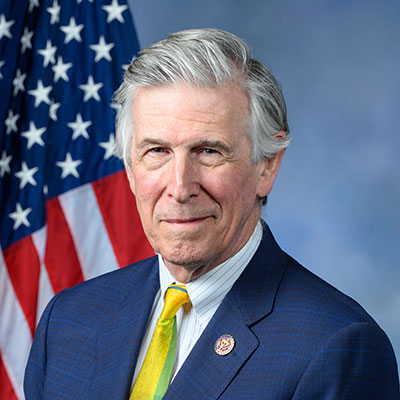Opinion Pieces
On Fusion Energy
Washington,
January 11, 2024
The 2023 film Oppenheimer conjures a dramatic story of how the top-secret Manhattan Project harnessed the power of nuclear fission for the controversial weapon that ended World War II. At the dawn of 2024, we are poised to harness the power of a different type of transformative energy — nuclear fusion. Fusion energy is the energy of our sun and the stars. It is the source of all other energy — fossil fuels, wind, solar, and even geothermal power, all derive from the energy created by fusion. Think Genesis: the famous, “Let there be light” — that light? Fusion. Fusion energy is the energy emitted when two hydrogen isotopes fuse together to form a helium atom. Its raw material is water. When a fusion reactor stops working, it simply halts — there are no explosions, fires, or meltdowns. Fusion renders electricity without carbon emissions or long-lasting nuclear waste. The science is easy, but the engineering is incredibly difficult. To fuse two hydrogen atoms, we need to heat them to 100 million degrees Centigrade. This is no problem for the Sun, but is much harder to replicate in a lab. Fusion engineers also face the challenge of designing structures that can withstand multiple reactions, given the reaction’s components and power. The great news is that we are now accomplishing the science on a regular basis. Lawrence Livermore National Laboratory achieved a world-famous breakthrough in December 2022, when it generated more energy from a fusion reaction than went into it. Livermore has now repeated this result multiple times. Around 40 US companies are racing to be the first to put fusion energy onto our electrical grid, with almost as many different engineering designs. I have championed fusion energy because I believe in its potential to fight climate change and poverty. Climate change is our century’s existential threat. 2023 was the hottest year in recorded history, and 2024 is very likely to be worse. We are making progress in integrating renewable energy sources, but not quickly enough. Fusion can provide us with a replacement for most fossil fuel use, especially in energy intensive industries. When fusion hits the grid, there will be a dramatic change in the demand for carbon-generating fuels. This could be another “silver bullet” in the fight against climate change. We have released immense amounts of carbon dioxide into our atmosphere for hundreds of years—and fusion gives us a strategy for reversing this accumulation. Direct Air Capture (DAC) is now being pioneered in Iceland, British Columbia, and soon in the U.S. This technology removes carbon directly from the atmosphere. However, DAC is highly energy intensive and could use more carbon than it captures if it is not paired with a zero-emission energy source. When paired with fusion, all carbon extracted becomes a net gain to our climate. The second reason for fusion’s importance is its potential role in alleviating poverty. Burning fossil fuels boosted humanity’s productivity, net wealth, and lifespans immensely after millennia in the dark. Today, our poorest billions are those with few energy resources. Imagine what abundant energy provided at low cost could mean for people without consistent access to energy, especially where poverty is a main barrier to that access, both abroad and in America. There will be countless consequences of using the energy of the stars in our own lives, including many unintended and unanticipated. What will it mean when energy is no longer a scarce resource? Will science evolve more rapidly than ever before? With fusion engines, could Mars be a few days’ trip away, rather than five months? What will our populations and healthcare provision look like when we can shift more resources to education and healthcare? All of these goals require a significant upfront investment in fusion energy. If we can achieve commercial fusion energy now, we would leave future generations with an immeasurable gift. We are at a turning point in fusion energy development — it’s up to us, and the time is now. |

